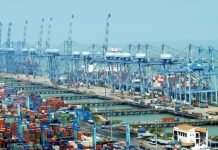Recently, there has been much concern surrounding reports that Malaysia is falling behind its regional neighbours in terms of attracting foreign direct investment (FDI), including supposedly losing out on key strategic investments.
Some have even pointed to the June 2020 United Nations Conference on Trade & Development as the origin for the grim news. The report also highlighted that Indonesia, Singapore and Vietnam received more than 80 percent of the US$156bil (RM626.7bil) in FDI that Asean countries pulled in 2020. Only 5 percent, or just US$7.8bil (RM31.3bil), went to Malaysia, which goes without saying is not a very favourable outcome for the nation.
The economic downturn caused by the Covid-19 pandemic as well as the recent resurgence of the coronavirus means that Malaysia cannot afford to be complacent. The country will need to look to new policies in an effort to attract FDI in the face of rivalry from regional competitors.
In order to increase FDI, SMEs need to be strengthened. New policies must be implemented with SMEs at the forefront to act as catalysts for economic and employment growth. This would also benefit government-linked companies and foreign investors as the spill-over effect is reversed.
One way to do this is to boost and strengthen SME linkages and production networks in Asean, enabling SMEs to contribute towards intra-Asean trade and investment flows as well as regional integration. It would also be a good idea to encourage and facilitate greater cooperation and involvement between SMEs of neighbouring countries such as Singapore, Thailand, and Indonesia.
It might also be a good idea to increase fiscal deficit to invest in DDI, including in research and development (R&D), and generate loose full employment. Macroeconomic strategies should be at the core with regards to job creation, including as part of the spill-over effects of R&D in green and renewable technologies.
Malaysia should also seek to further boost and diversify its trade and investment links beyond traditional FDI partners. The nation should consider deepening economic and trade linkages with rapidly growing economies and emerging markets such as Latin America, Central Asia, the Middle East, and North Africa; instead of relying on traditional partners such as Asean, East Asia, North America, and the EU.














